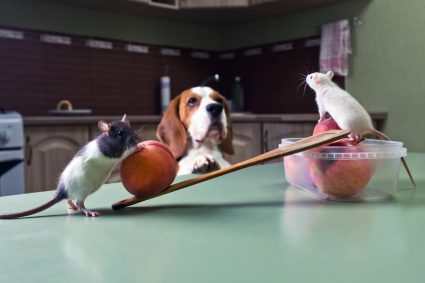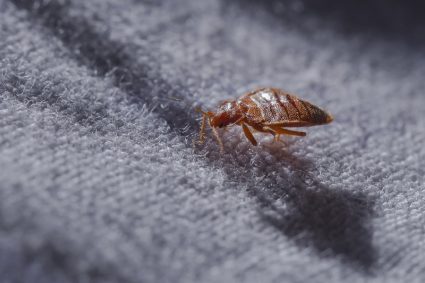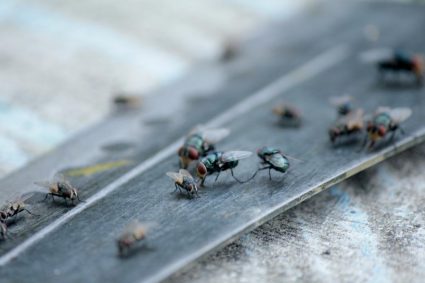
Fleas are small, wingless insects known for their remarkable jumping abilities and their need for blood meals. But what exactly keeps these pesky parasites alive? And how do they manage to survive in various conditions?
Fleas stay alive by going through four life stages: egg, larva, pupa, and adult, each affected by environmental conditions. They thrive in moist, shady, and cool environments, and feed primarily on the blood of mammals. Fleas have also adapted to survive in various environments with specialized features for feeding, jumping, and camouflage. Their survival largely depends on their ability to find hosts and reproduce rapidly.
The Life Cycle of Fleas
Fleas go through four life stages: egg, larva, pupa, and adult. The duration of each stage varies depending on environmental conditions such as temperature and humidity.
- Egg stage: Flea eggs hatch within two days to two weeks. A single adult flea can lay up to 50 eggs per day.
- Larva stage: Flea larvae, which are free-moving and feed on organic debris, can measure up to ¼-inch long. This stage lasts from four to 18 days and makes up about 35% of the flea population in an average household.
- Pupa stage: Flea larvae spin cocoons and become pupae. This stage typically takes five to 14 days but may last longer under poor conditions. Pupae account for about 10% of the flea population in a home.
- Adult stage: Adult fleas emerge from the cocoon when a host is nearby. They can live up to a year under ideal conditions, but only survive one to two weeks without a host. Adult fleas make up about 1% of the flea population.
In optimal conditions (70-85°F and 70% humidity), the life cycle can take anywhere from a couple of weeks to many months. In some cases, it can take several months, with some experiments showing 22 weeks from egg to adult under unfavorable conditions.
Fleas’ Preferred Environments
Fleas prefer environments that are moist, shady, and cool. Outdoors, they thrive in areas with shrubs, leaves, and trees, avoiding sunny areas or open grass. Fleas love high humidity and moderate temperatures, making the inside of homes an ideal environment for them. They are often found in areas where pets spend most of their time, such as pet bedding, furniture cushions, and thick carpeting.
To prevent flea infestations, it’s important to maintain a clean environment both indoors and outdoors. This includes changing pet bedding frequently, vacuuming thoroughly, trimming back shrubs, raking out leaves, and limiting the number of areas where fleas can thrive.
Flea Feeding Habits
Fleas primarily feed on the blood of mammals, including humans, cats, dogs, and other animals. They are known for being hematophagic, meaning they primarily dine on blood, but they can also consume feces, decaying plant or animal matter, and other organic debris.
Adult fleas typically feed several times a day, with each feeding session lasting a few minutes. They need to feed at least every 12 hours to stay well-nourished. Under ideal conditions, fleas feed daily and can consume up to 15 times their body weight in blood.
Flea Predators and Population Control
The main predators of fleas include fire ants, nematodes, spiders, beetles, snakes, frogs, and lizards. These predators help control flea populations by feeding on fleas and their eggs, larvae, and pupae stages. By maintaining a natural habitat for these predators, flea populations can be kept under control.
Fleas’ Adaptation to Different Environments
Fleas have adapted to survive in various environments. They have specialized mouthparts for feeding on blood, highly muscular hind legs for jumping, and can camouflage themselves to avoid detection. Female fleas lay eggs that fall off the host animal and develop into legless larvae on the ground. These larvae feed on waste produced by adult fleas, allowing them to thrive in environments where host animals live in dens or nests.
In conclusion, fleas are highly adaptable creatures that can survive in a variety of environments. Their survival is largely dependent on their ability to find hosts, reproduce rapidly, and adapt to different conditions. Understanding these factors can help in the development of effective flea control strategies.
Frequently Asked Questions
What are the common signs of a flea infestation?
Common signs of a flea infestation include itching and scratching, especially around the neck, tail, and belly of your pet; tiny black specks on your pet’s coat (these are flea droppings); hair loss due to scratching; and seeing the actual fleas themselves, which are small and dark brown.
How can I protect my pet from fleas?
Protecting your pet from fleas involves several steps. First, you should regularly check your pet for signs of fleas. Use a flea comb to brush through your pet’s fur and inspect for signs of fleas. Second, you should keep your pet’s environment clean. This includes regularly washing your pet’s bedding and vacuuming your home. Lastly, there are many flea prevention products on the market, such as topical treatments, oral medications, and flea collars. Always consult with a veterinarian to choose the best option for your pet.
Can fleas transmit diseases to humans?
Yes, fleas can transmit diseases to humans. The most well-known is the Bubonic plague, which is transmitted by the bite of an infected flea. Fleas can also transmit other diseases, such as murine typhus, and parasites like tapeworms.
How high can fleas jump?
Fleas are known for their incredible jumping abilities. They can jump up to 7 inches vertically and 13 inches horizontally. This is equivalent to a human jumping over a 200-foot tall building!
Can fleas survive in water?
Fleas cannot survive in water and will often drown if submerged. This is why giving your pet a bath with a flea shampoo is a common method to kill fleas. However, flea eggs and larvae can survive in humid environments, so it’s important to thoroughly dry any areas where these could be present after cleaning.











